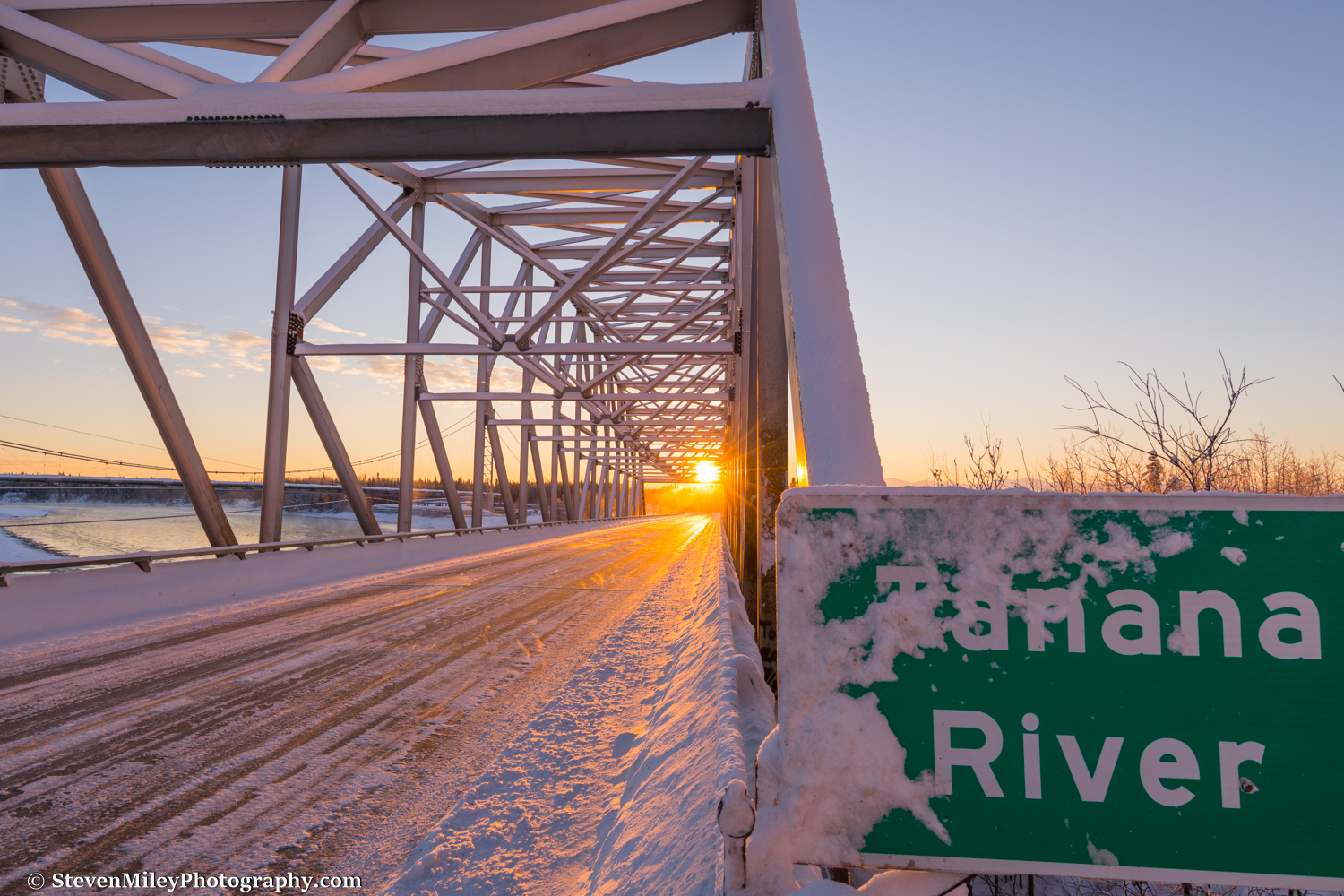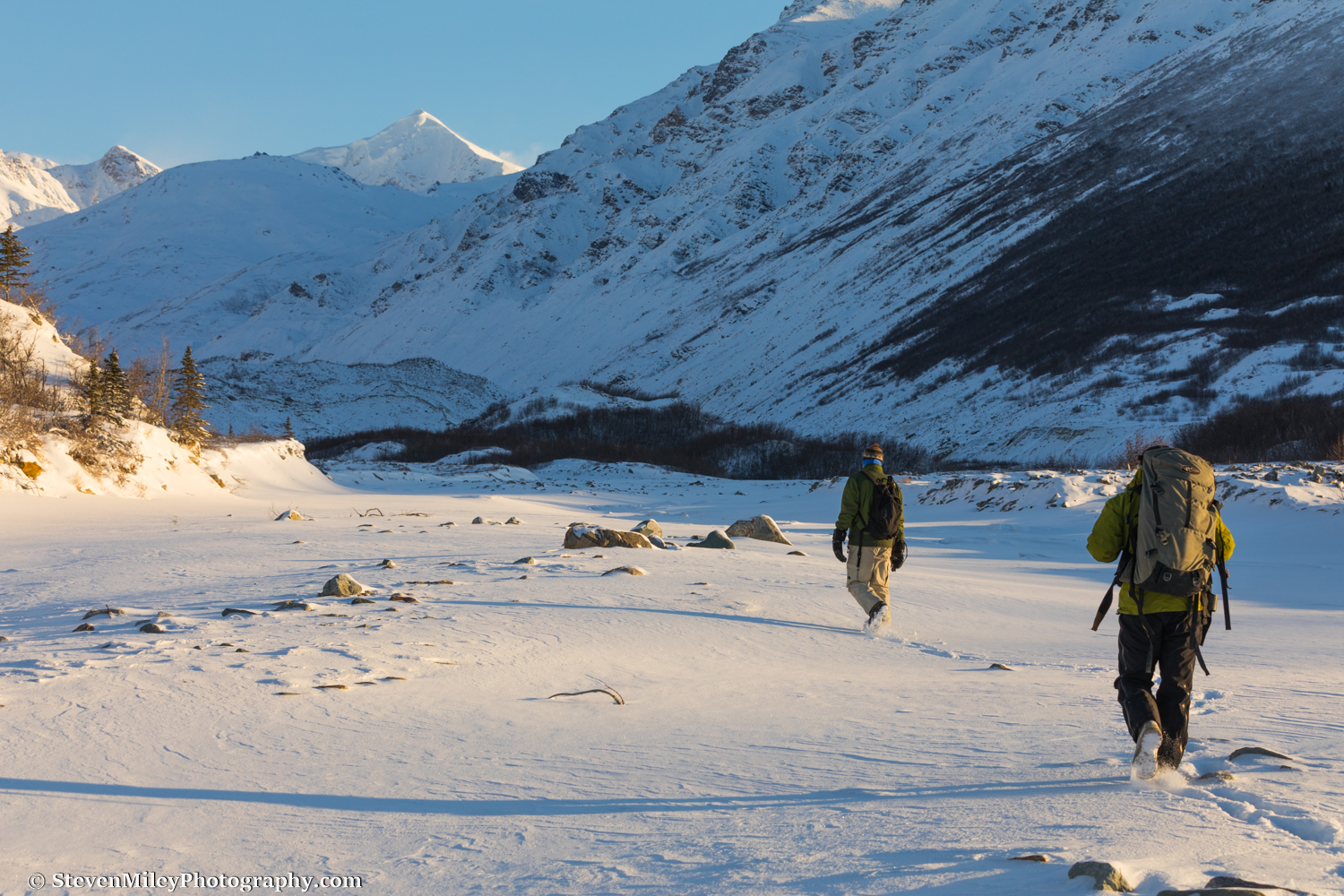Aurora borealis over Granite Mountain.
My photographic output tends to shrink during early winter in Interior Alaska. After the fall colors disappear, it's a waiting game until enough snow falls to cover up the brown landscape and provide a good enough base for me to start using my snowshoes and splitboard again. The rivers and creeks are still flowing, but the colder air temperatures make crossings more uncomfortable and dangerous. Snow conditions at higher elevations can be unpredictable. The aurora borealis returns but the nights tend to be cloudy until the really cold temperatures start showing up. Still, it's possible to get out this time of year and take some good shots.
Fall colors on an unmarked trail above Bear Creek in the Alaska Range, near Black Rapids.
One of the latest salmon runs in Alaska occurs in Delta Junction where I live. Salmon travel over 1,000 miles up the Yukon River and Tanana River and spawn in the Delta River and Clearwater River in town. It's an odd sight to see salmon swimming upstream with snow on the banks, and some of them even accumulate ice on their body before they die.
Dead chum salmon near the confluence of the Delta River and Tanana River.
Caribou and moose shed the velvet off their antlers by early September, and they're one of the best subjects to photograph until November. I just passed a large group of bull caribou a couple days ago (mid-November) and I only counted one antler among them. The females keep their antlers much later into winter but they aren't as impressive as male caribou antlers. The bull moose may keep their antlers into December but I haven't had much luck this year bumping into any big bulls at close range.
Bull caribou foraging after the first significant snowfall in the Donnelly Flats.
I saw the aurora on several occasions in August, September, and October, but never at the right time to snap any pictures. I finally caught a good show on November 7 after a heavy snowfall. It was my first time photographing in subzero temperatures this winter and the Richardson Highway was completely frosted over. The moon was nearly full but the aurora still shined brightly in the night sky, dancing over Donnelly Dome and the Alaska Range to the south. (Check out my guide for tips on shooting the aurora.)
Aurora borealis over Donnelly Dome.
Frequent high winds tend to blow the snow away in Delta Junction, so after it snowed heavily a week ago I made a point to photograph around town before the winds arrived. I caught a nice sunrise at the Tanana River bridge in Big Delta, where ice was flowing in the river and bald eagles were flying back and forth over the pipeline.
Sunrise at the Tanana River bridge in Big Delta.
In June, I passed by a new ice cave entrance at the terminus of Castner Glacier. The bulk of Castner Creek used to bubble up from underneath the glacier at this point, but the water has since carved a large tunnel beneath the ice. I visited the tunnel in October but there was too much water flowing through it to get very far inside. I returned to it a few days ago and the floor has now frozen solid. Oddly enough, it has snowed more in Delta Junction than in the mountains, so my friends and I were able to hike to the glacier without snowshoes.
Hiking through snow to Castner Glacier.
Walking on the ice floor was a little unnerving since we could see silty water flowing beneath the ice. My friends opted to climb onto an "ice bench" and followed it until it ended, while I continued along the floor in crampons. The tunnel darkened as it curved around a corner, and the ice started becoming too thin for me to continue. We heard rushing water echoing somewhere ahead, but couldn't tell how much farther the tunnel extended. I'll be back later this winter after the ice on the floor thickens. (If you're planning to photograph this or another ice cave, check out my blog post How To Photograph An Ice Cave.)
Exploring a tunnel beneath the ice of Castner Glacier.
I'm looking forward to exploring many more ice caves this winter and hopefully many sleepless nights shooting the aurora as well.
Interested in photographing the aurora or an ice cave? I offer guided tours.














